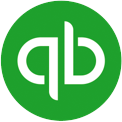10. Piece together your content calendar
The word “strategy” can be intimidating, so we’re going to keep this as simple as possible. By now, you know:
- Who your audience is
- What platforms you’ll be posting to
- How often you’ll be posting to those platforms
That’s all valuable information, but it still isn’t tied together in a cohesive plan. This is the time when you want to grab a notepad or calendar where you can map out your next month’s worth of content.
The easiest way to start is by building a repeatable format for yourself—where you’ll post the same type of content on a standard day. Using our bakery example and the posting frequency we outlined in the following step, that might look like:
Facebook: Three posts per week
- Every Monday: Post an announcement about what baked goods are on special that week
- Every Wednesday: Ask a baking-related trivia question (first to answer correctly in a comment wins a coupon)
- Every Friday: Share a recent review, customer testimonial, or piece of feedback (and nudge people to leave reviews themselves)
Instagram: One post per week
- Every Wednesday: Post a photo of a recent custom cake or bakery order that was completed, with a detailed description.
With that rough framework mapped out, you can begin planning out the actual content on a spreadsheet or in your calendar.
What photos will you post? What trivia questions will you ask? You can sort that all out ahead of time and even schedule your posts (more on scheduling tools in a later section) so that you can maintain a consistent social media presence—without needing to invest time into it every single day.
If you’re worried that this sort of straightforward approach will be repetitive for your followers, don’t be.
Nobody is monitoring your social media profiles as closely as you are, and the different algorithms mean that only a small percentage of people (maybe as little as 5% of your followers) are seeing every one of your posts in their feed. They likely won’t even catch on to your pattern, but will still appreciate the consistency.





